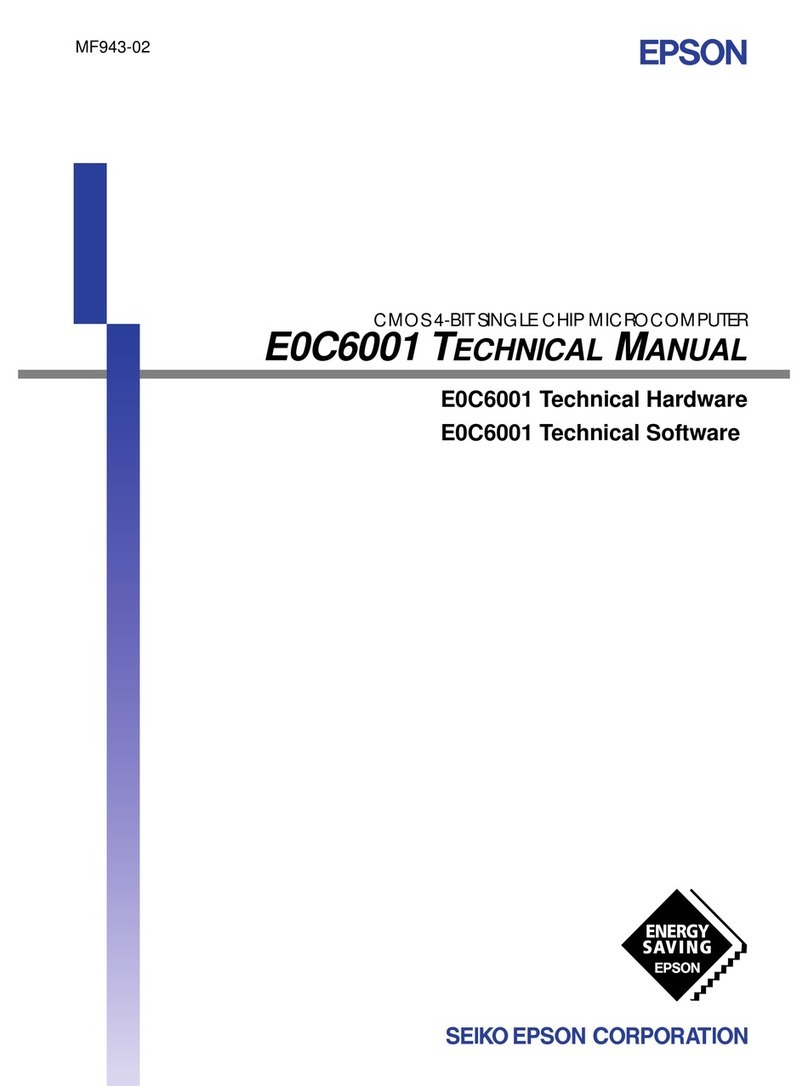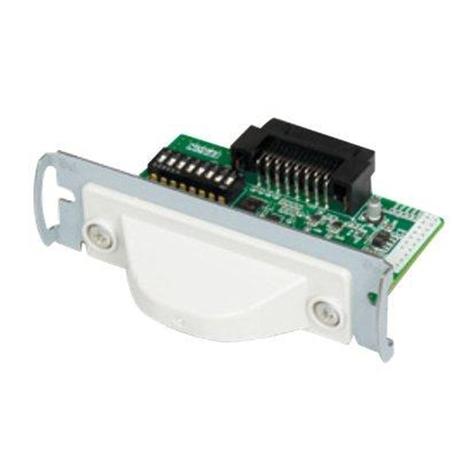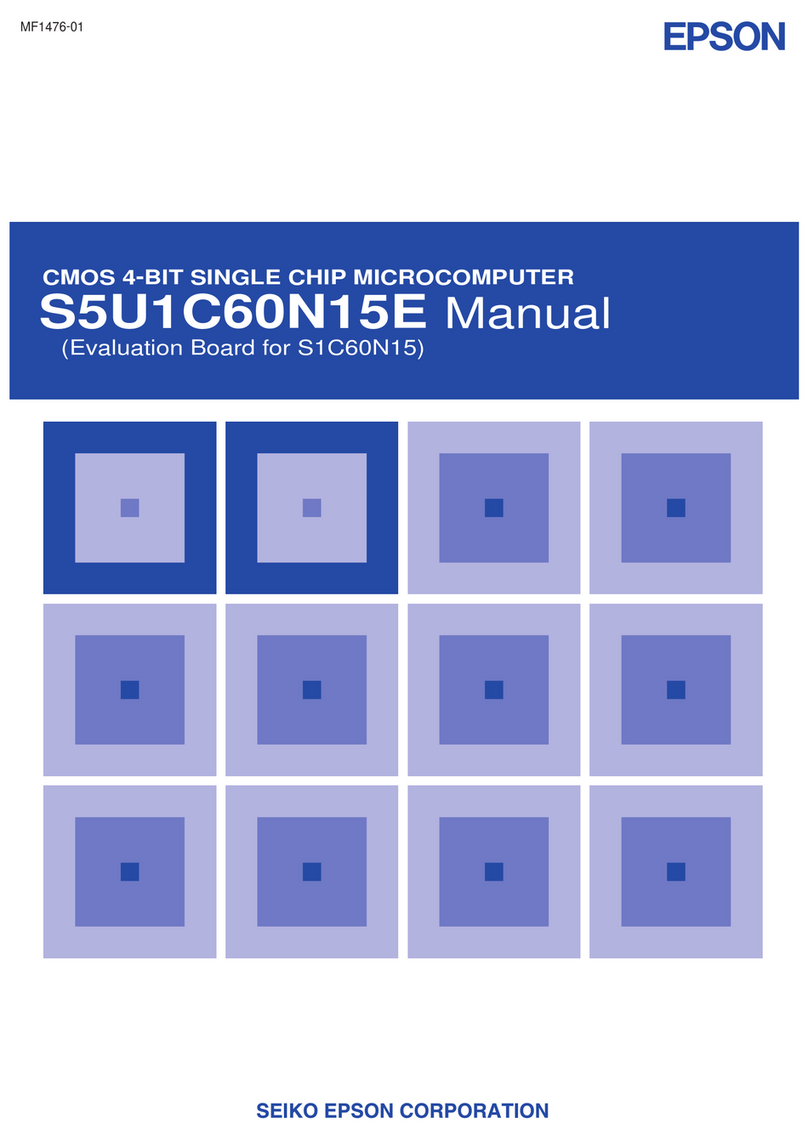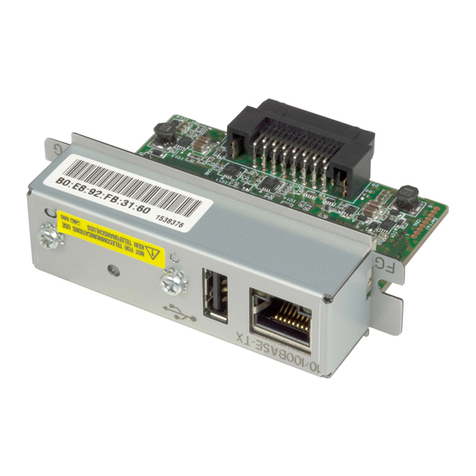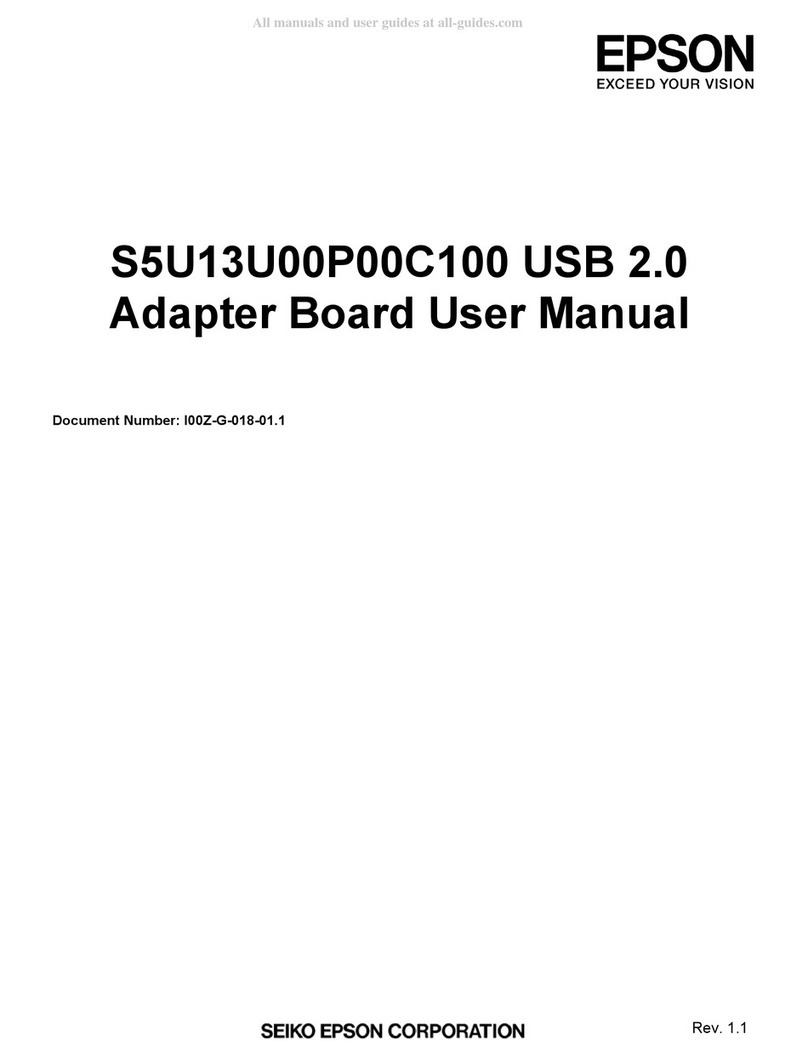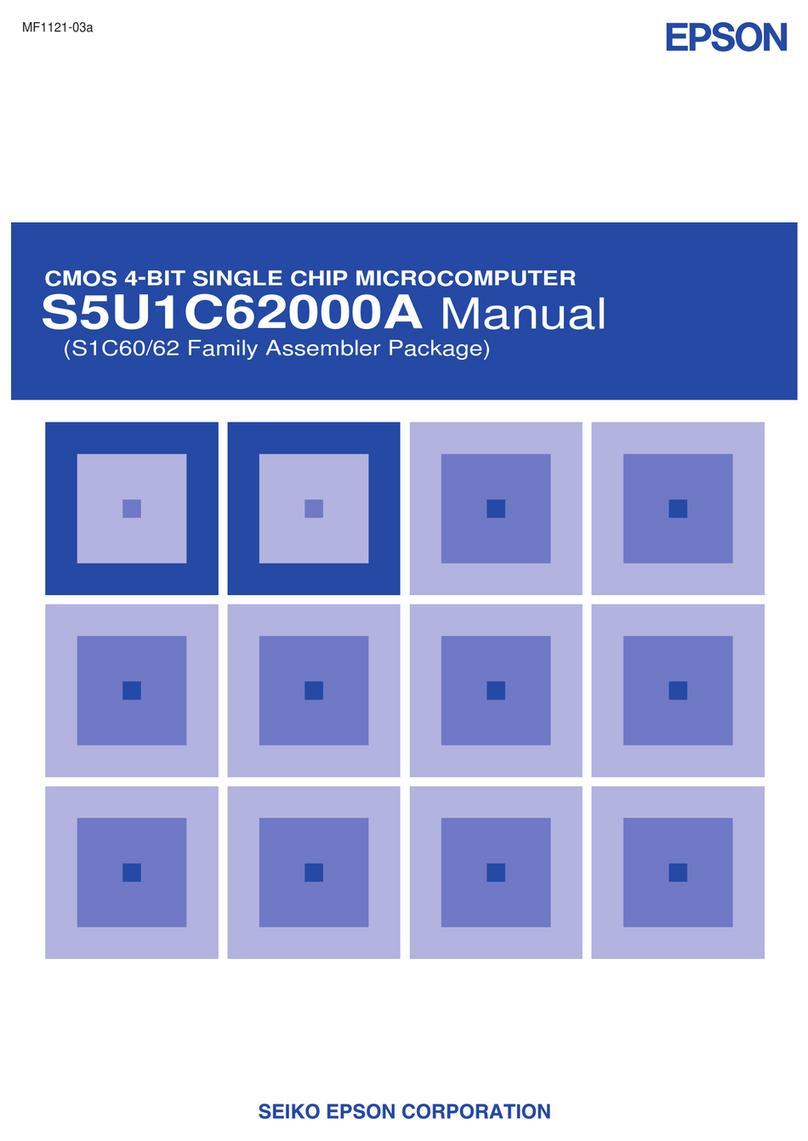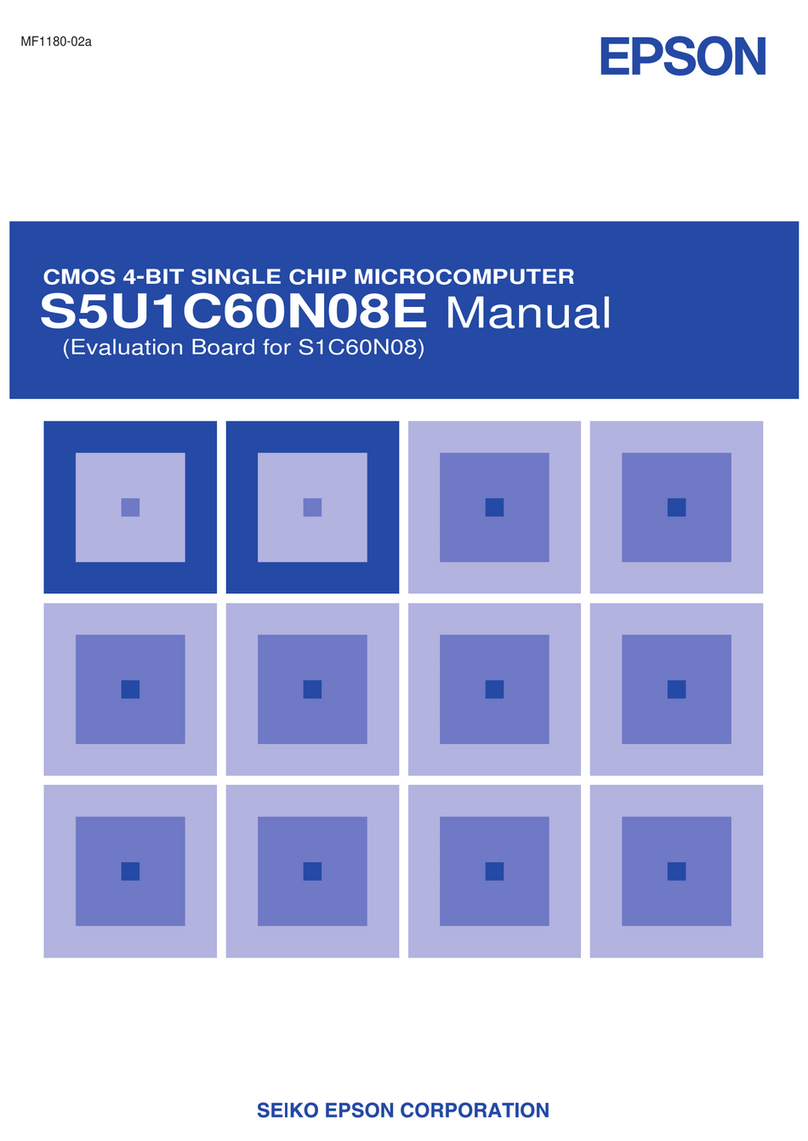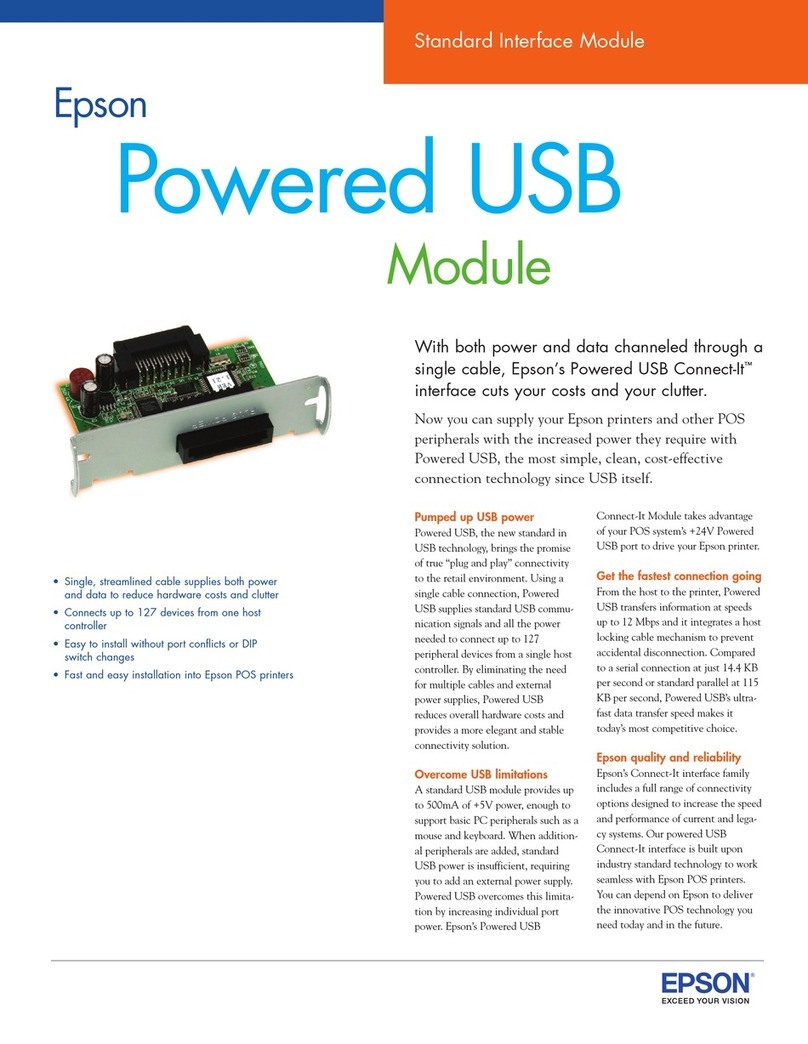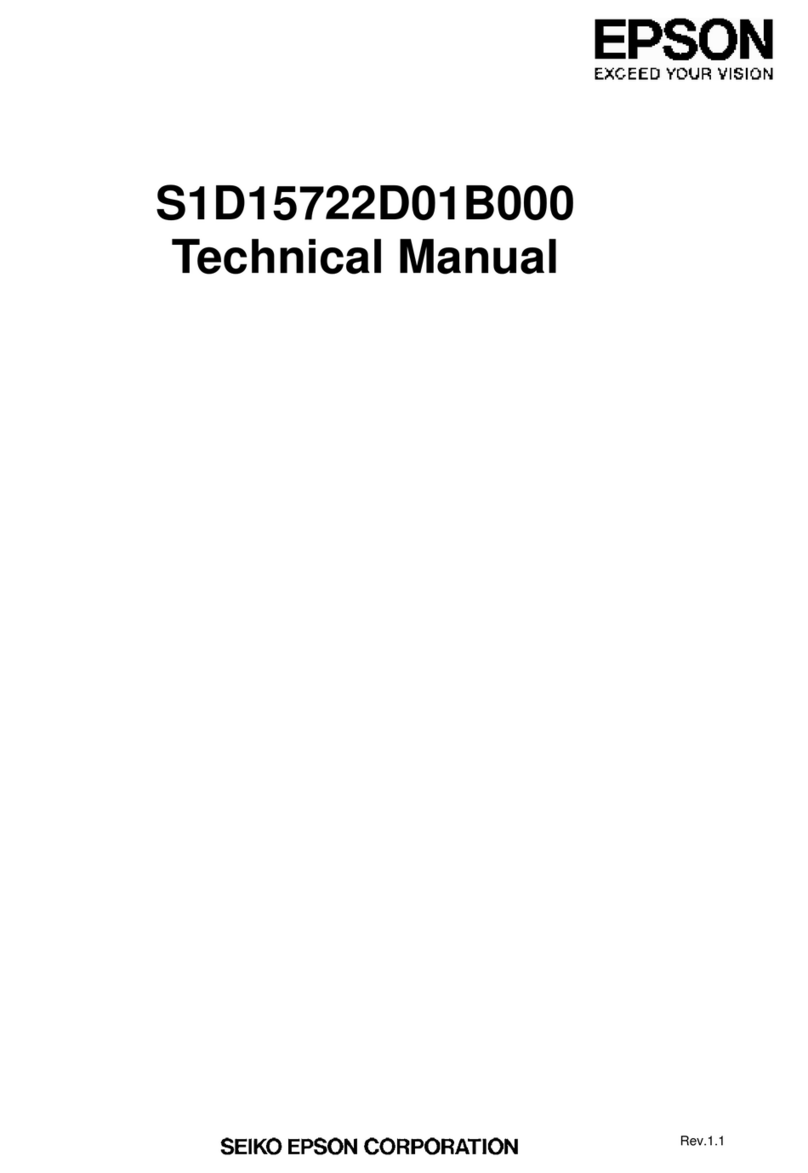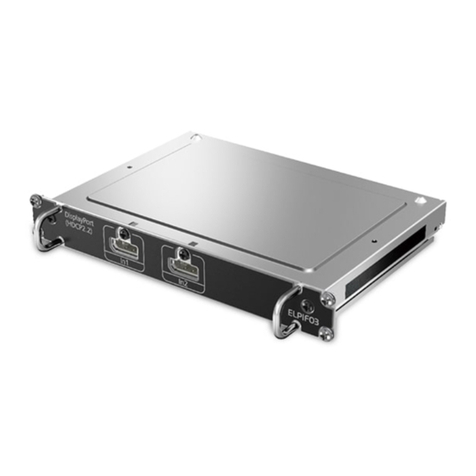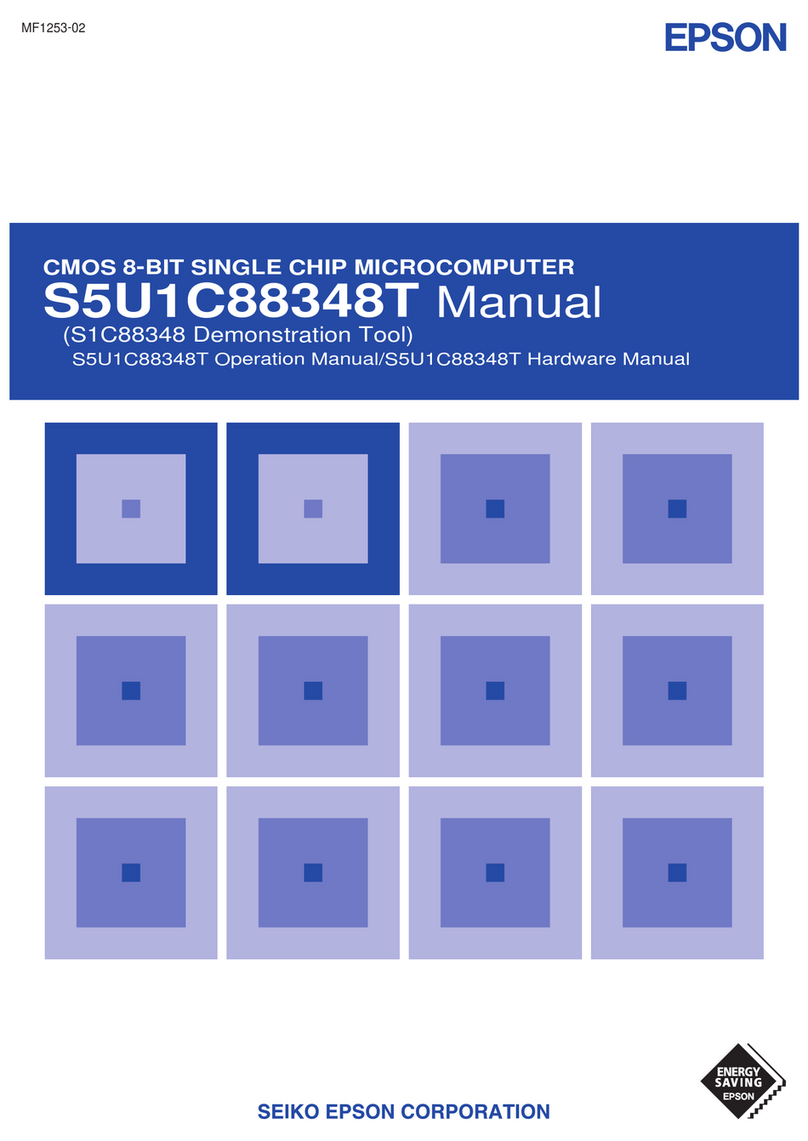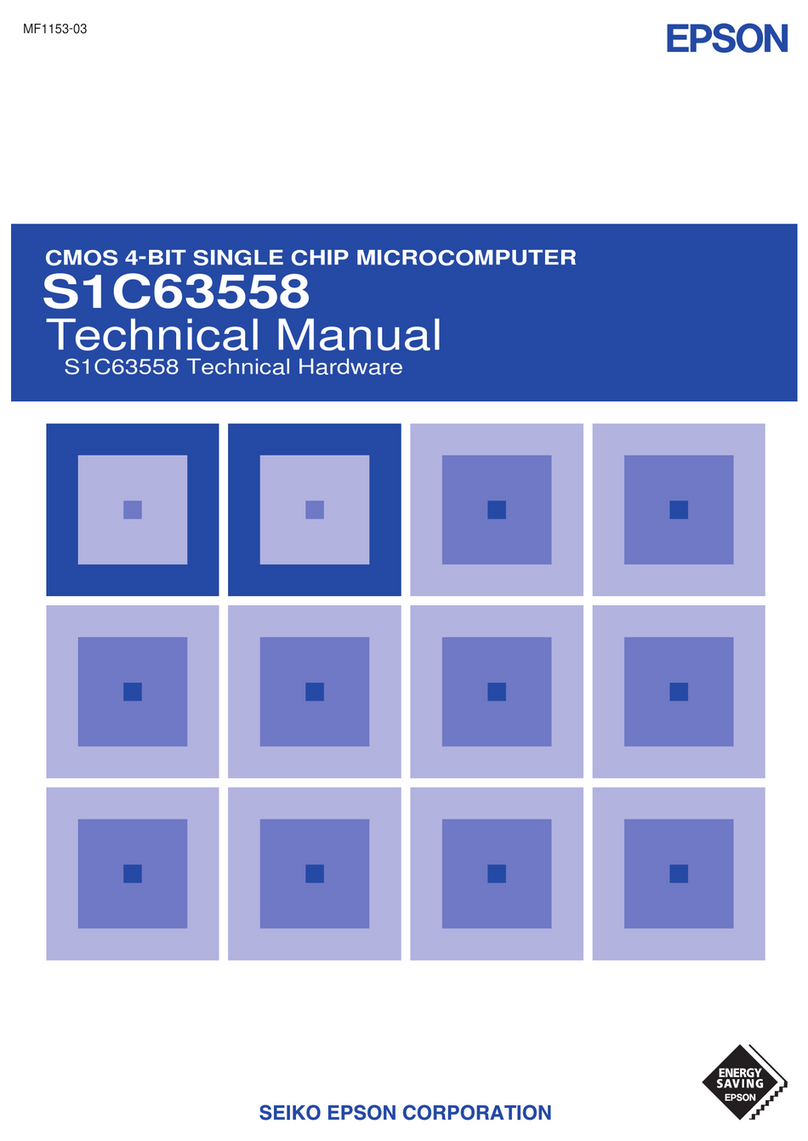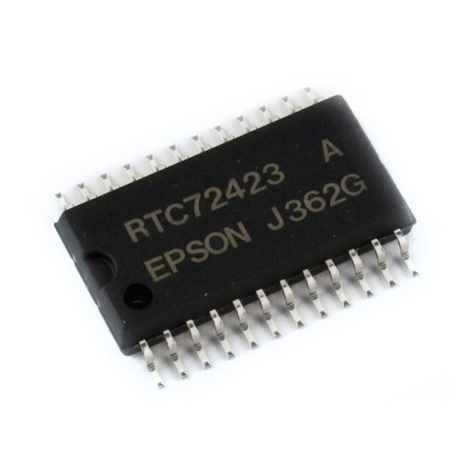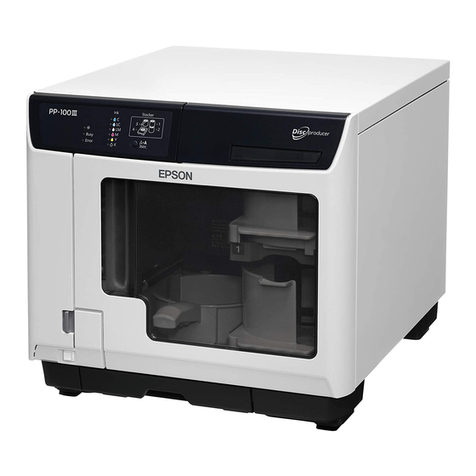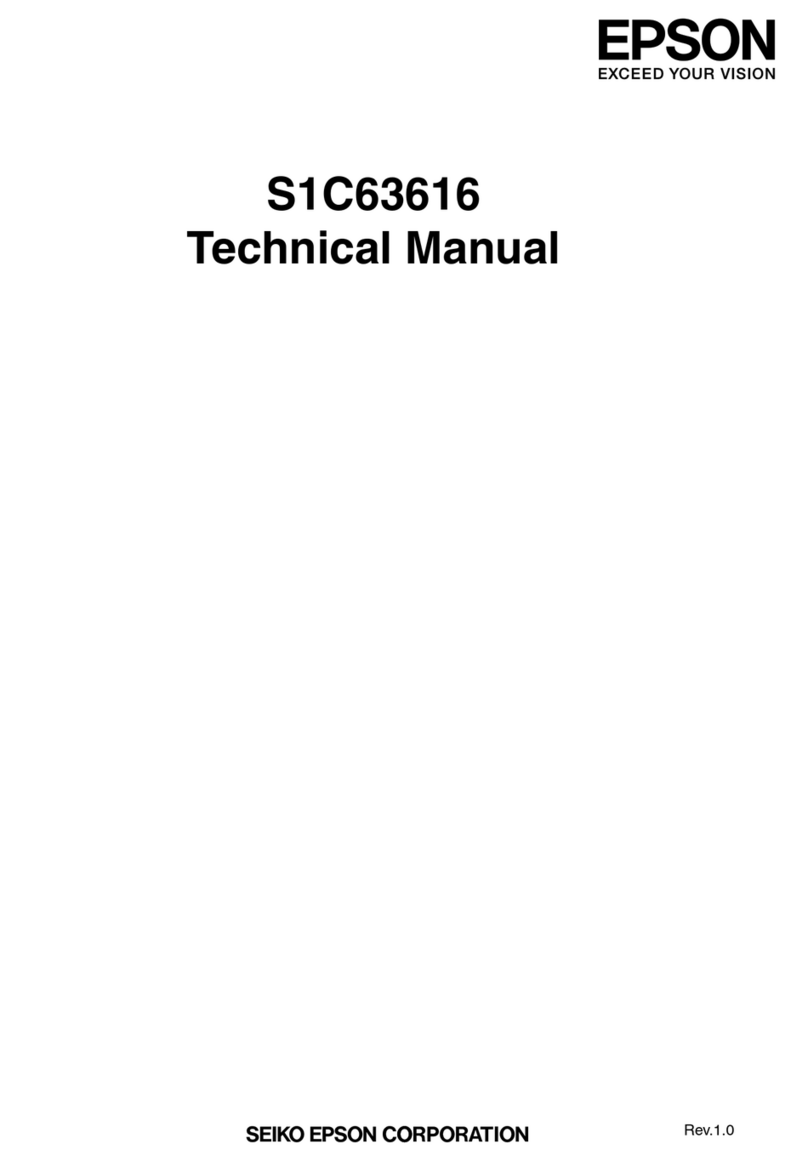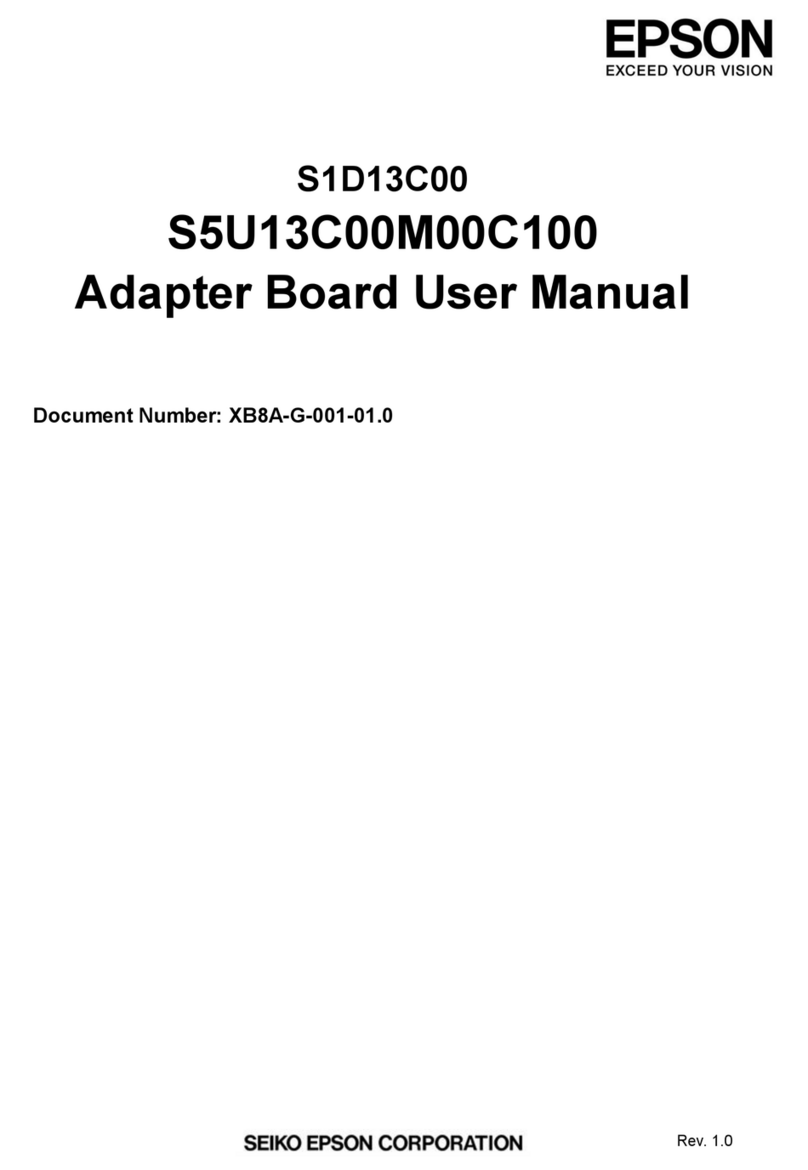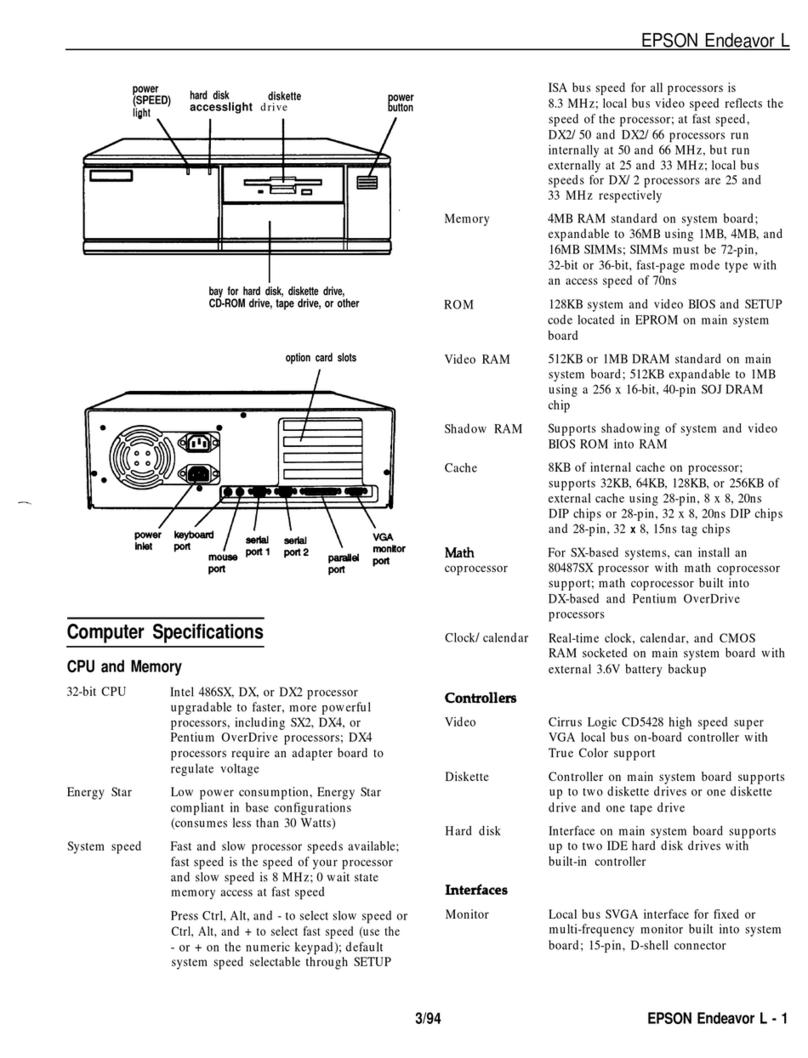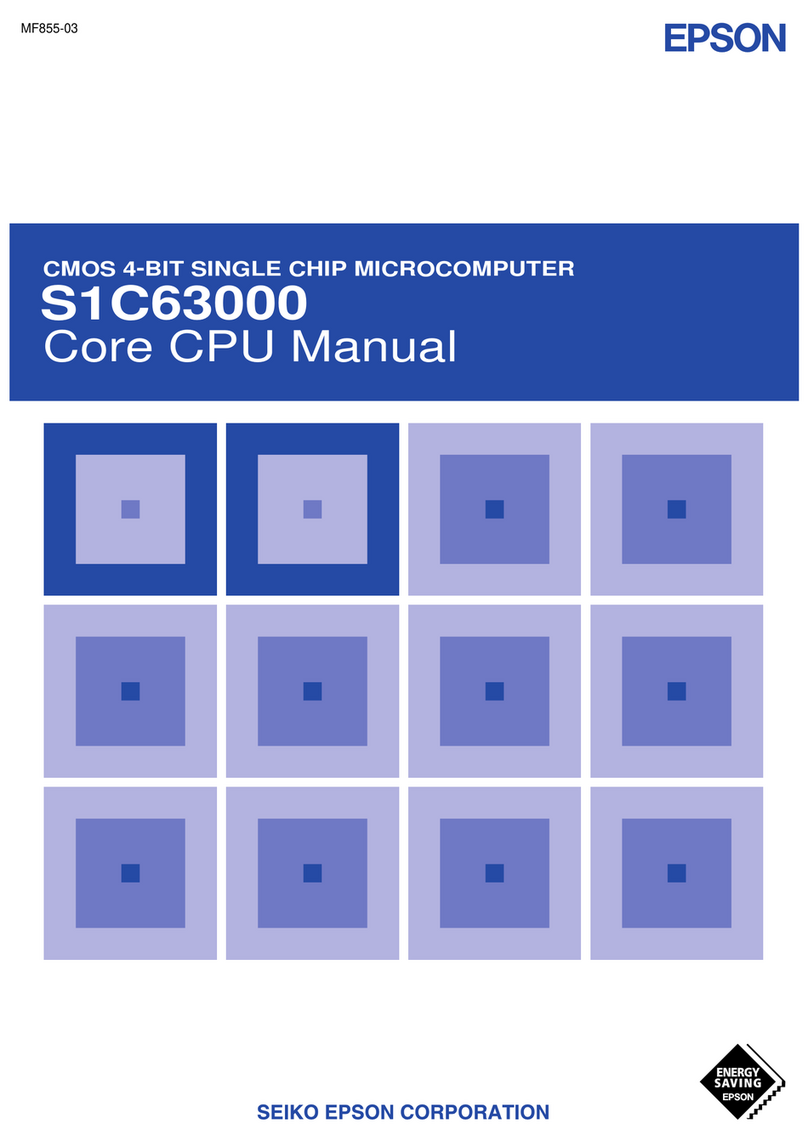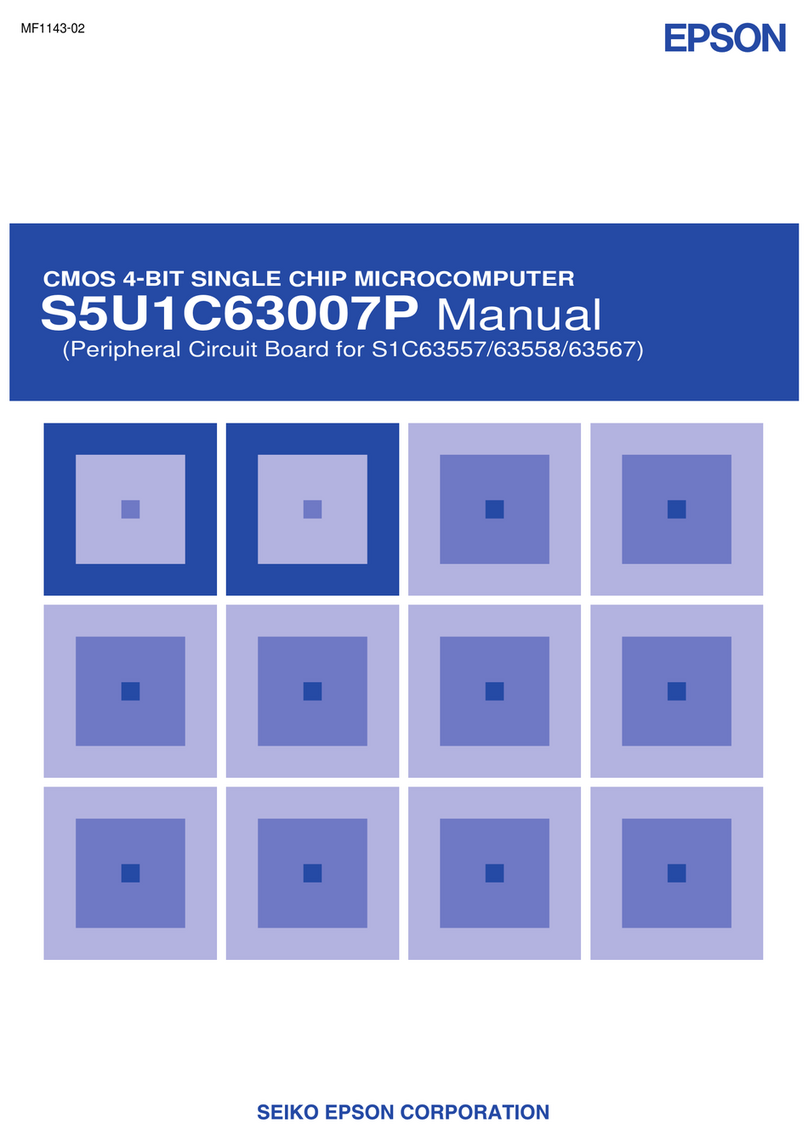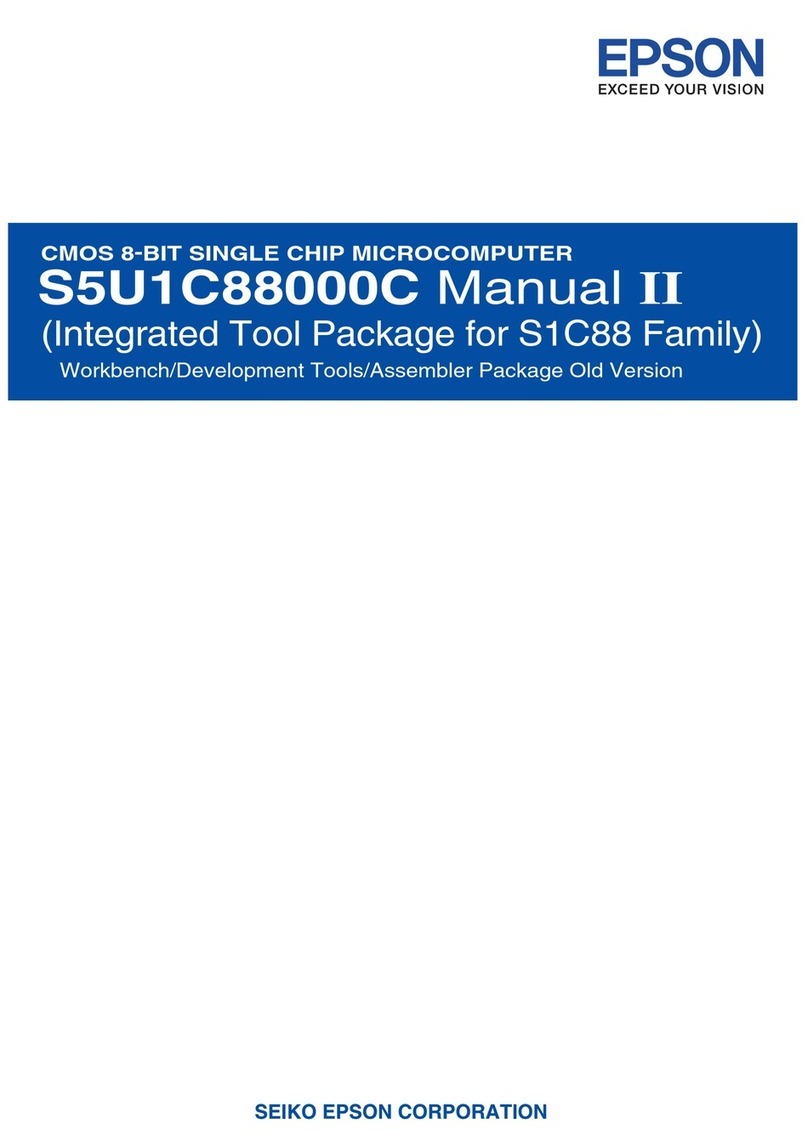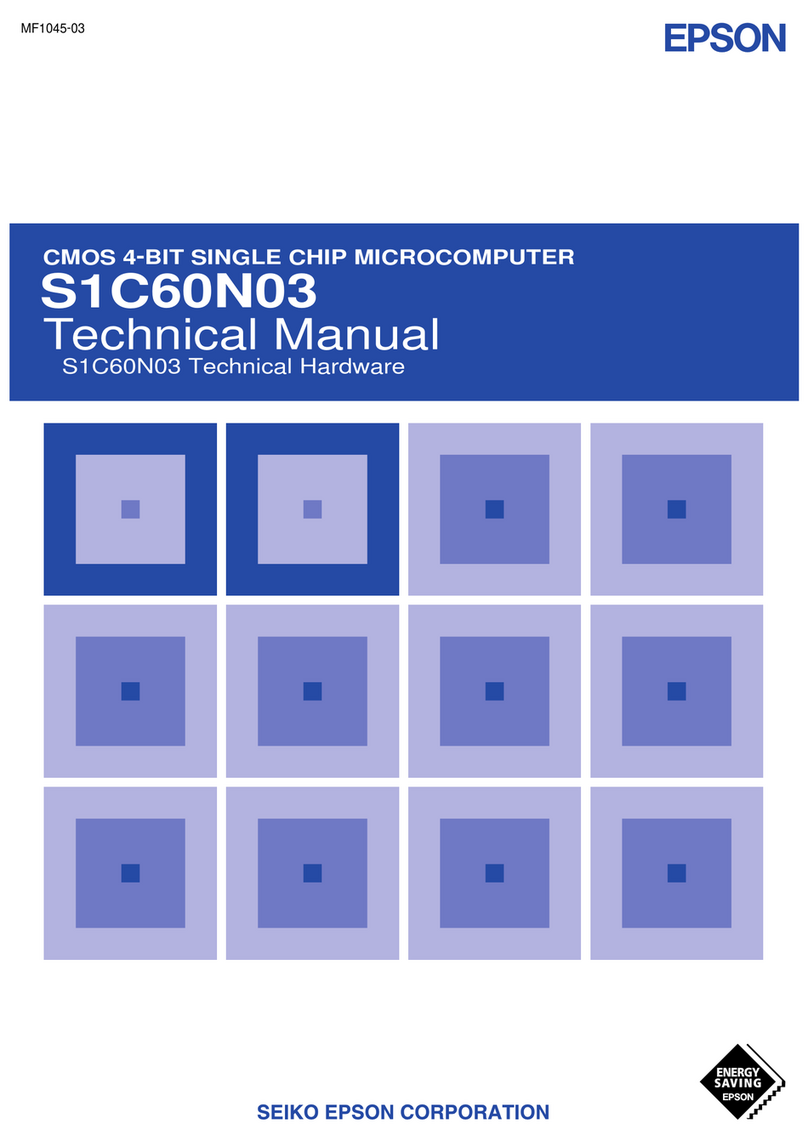
ii EPSON S1C63454 TECHNICAL MANUAL
CONTENTS
4.5 Output Ports (R00–R03) .............................................................................. 31
4.5.1 Configuration of output ports ................................................................... 31
4.5.2 Mask option ............................................................................................... 31
4.5.3 High impedance control ............................................................................ 32
4.5.4 Special output ............................................................................................ 32
4.5.5 I/O memory of output ports....................................................................... 34
4.5.6 Programming notes ................................................................................... 35
4.6 I/O Ports (P00–P03 and P10–P13) .............................................................36
4.6.1 Configuration of I/O ports ........................................................................ 36
4.6.2 Mask option ............................................................................................... 37
4.6.3 I/O control registers and input/output mode ............................................ 37
4.6.4 Pull-up during input mode ........................................................................ 37
4.6.5 I/O memory of I/O ports............................................................................ 38
4.6.6 Programming note..................................................................................... 40
4.7 LCD Driver (COM0–COM16, SEG0–SEG39) ...........................................41
4.7.1 Configuration of LCD driver .................................................................... 41
4.7.2 Power supply for LCD driving.................................................................. 41
4.7.3 Mask option ............................................................................................... 42
4.7.4 LCD display control (ON/OFF) and switching of duty............................ 42
4.7.5 Display memory......................................................................................... 45
4.7.6 LCD contrast adjustment .......................................................................... 46
4.7.7 I/O memory of LCD driver........................................................................ 47
4.7.8 Programming notes ................................................................................... 49
4.8 Clock Timer .................................................................................................. 50
4.8.1 Configuration of clock timer ..................................................................... 50
4.8.2 Data reading and hold function ................................................................ 50
4.8.3 Interrupt function ...................................................................................... 51
4.8.4 I/O memory of clock timer ........................................................................ 52
4.8.5 Programming notes ................................................................................... 54
4.9 Stopwatch Timer...........................................................................................55
4.9.1 Configuration of stopwatch timer ............................................................. 55
4.9.2 Count-up pattern ....................................................................................... 55
4.9.3 Interrupt function ...................................................................................... 56
4.9.4 I/O memory of stopwatch timer ................................................................ 57
4.9.5 Programming notes ................................................................................... 58
4.10 Programmable Timer ...................................................................................59
4.10.1 Configuration of programmable timer.................................................... 59
4.10.2 Setting of initial value and counting down ............................................. 60
4.10.3 Setting of input clock in timer mode ....................................................... 61
4.10.4 Interrupt function .................................................................................... 61
4.10.5 Setting of TOUT output ........................................................................... 62
4.10.6 Transfer rate setting for serial interface ................................................ 63
4.10.7 I/O memory of programmable timer ....................................................... 64
4.10.8 Programming notes ................................................................................. 68
4.11 Serial Interface (SIN, SOUT, SCLK, SRDY)................................................69
4.11.1 Configuration of serial interface ............................................................ 69
4.11.2 Mask option ............................................................................................. 70
4.11.3 Master mode and slave mode of serial interface.................................... 70
4.11.4 Data input/output and interrupt function ............................................... 71
4.11.5 I/O memory of serial interface................................................................ 74
4.11.6 Programming notes ................................................................................. 77
